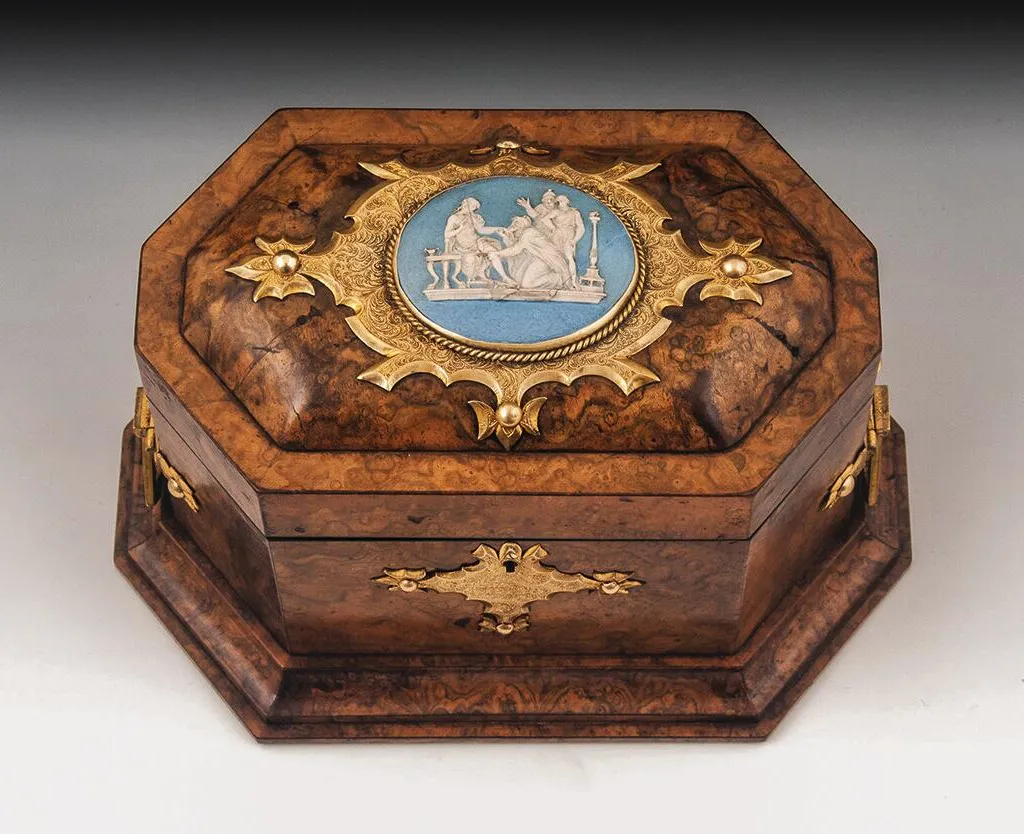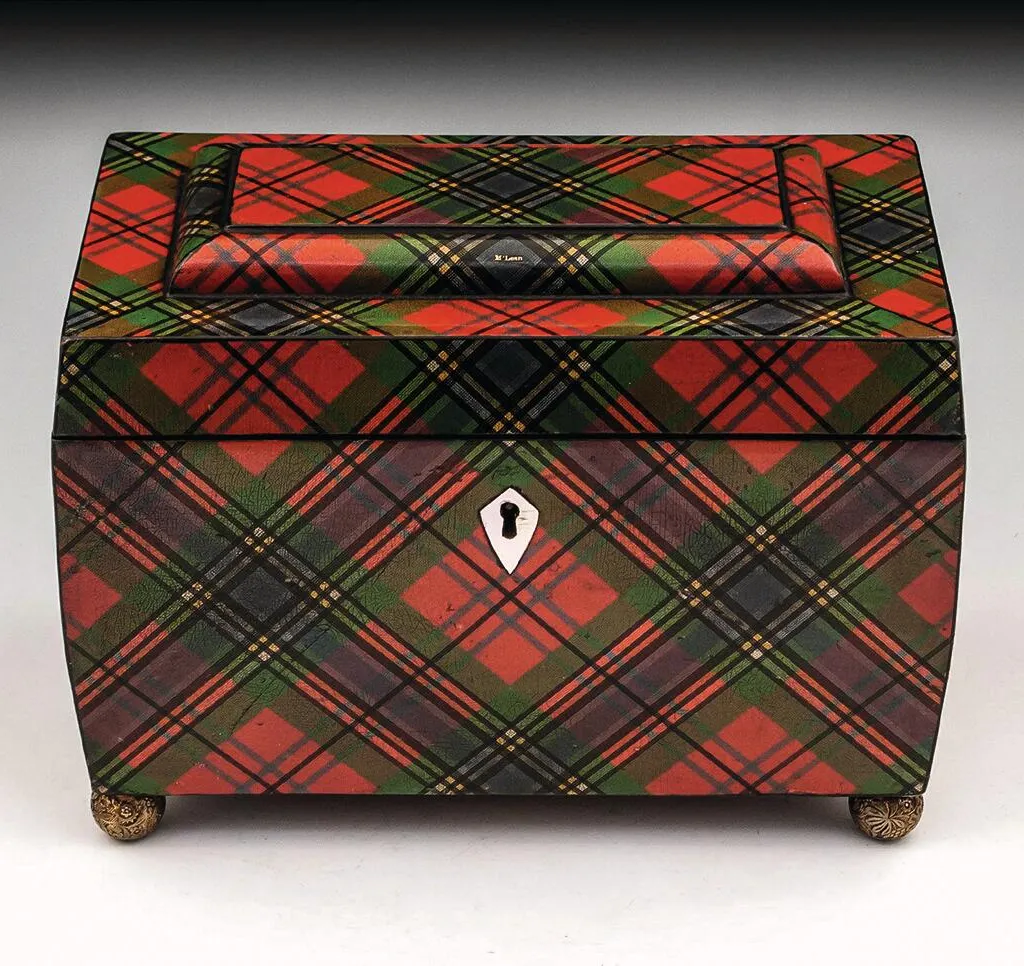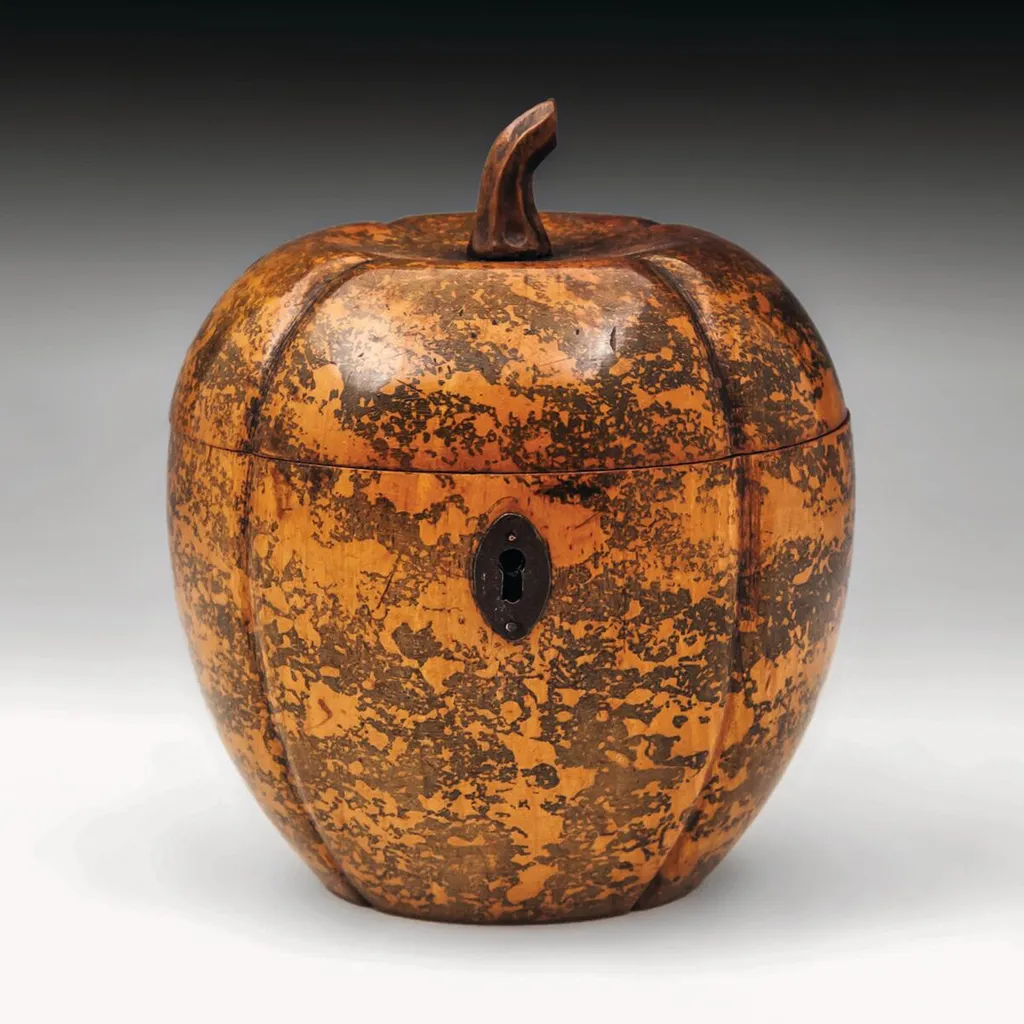While the history of tea drinking stretches far back to China’s Tang dynasty (618–906 AD), British high society properly took up this pastime with gusto in the 17th century. This is partly thanks to King Charles II’s Portuguese wife, Catherine of Braganza, who was already an avid tea drinker when she came to Britain in 1662 and helped to make the drink fashionable.
By the mid 18th century, with imports from the East India Company, the widespread prominence of tea meant that its price rocketed. As a result, tea became heavily taxed, which led to a growing black market for the precious leaves, and a subsequent demand for smart storage solutions. ‘Because tea was so expensive, to keep it safe, people would store it in a tea chest or tea box, which eventually became known as a tea caddy,’ explains dealer Mark Goodger.

The word caddy is derived from the Malay ‘kati’, a unit of weight by which tea was sold. ‘As tea was too expensive to risk leaving it in the presence of servants, the caddy in which it was stored would generally be kept in the drawing room,’ Mark adds. ‘Subsequently, the tea caddy became an important and fashionable accessory.’
The earliest examples of caddies closely resembled ginger jars, made from porcelain, and were often blue and white, however very few can be found today. Later, caddies were made from precious materials such as silver, shagreen or tortoiseshell, reflecting the revered, other-worldly aromas of the tea leaves they contained.
Antique silver expert Ann Wax of Wax Antiques chronicles the changing style of the caddy: ‘Some of the earliest silver examples date from the late 1600s and early 1700s. They had sliding bases (or tops) and the cap was used for measuring the tea. By the mid 18th century, matching sets were available, with two caddies (for green and black tea) and a sugar bowl or mixing bowl, all fitted into a wooden or shagreen case, often with silver mounts.’

Key designers of caddies can be categorised by the materials they used. ‘The leading silversmiths of the time included Paul de Lamerie and Paul Storr, and Hester Bateman, the collectable lady silversmith working in the late 18th century in London.’ Silver caddies are usually valued between £500 to £5,000, with boxed sets being of higher value.
Meanwhile, celebrated Georgian cabinetmakers Thomas Chippendale and George Hepplewhite were two of the best-known tea caddy designers using wood. While in some ways similar in style, their caddy aesthetics do differ. The Chippendale method is characterised by a minimalist rectangular or square shape, mainly in mahogany, with a handle, usually resembling a miniature chest and featuring a carved, raised lid. In contrast, Hepplewhite’s technique is more decorative, using the neoclassical Adam style, and can be oblong, oval or square, usually with a concave or flat lid.

According to Mark, another Georgian heavyweight Henry Clay ‘made tea caddies out of papier-mâché, which is highly collectable. During the Regency and Victorian periods, more pieces were clearly marked with big names such as Lund, Asprey and Betjemann.’
During the Georgian and Regency periods, craftsmanship flourished and tea caddies were produced in a range of shapes and designs. ‘The form of tea caddies changed during the early 19th century,’ says Stephen Wild of Patrick Sandberg Antiques. He describes the tall, three-legged teapoy as ‘a caddy, but mounted on a turned stem and base’.
According to tea historian and lecturer Jane Pettigrew in her book Design For Tea, the majority of teapoys were made between 1820 and 1850. And in A Collection of Designs for Household Furniture and Interior Decoration of 1808, George Smith, a 19th-century designer and caddy maker, wrote that teapoys were used ‘to prevent company rising from their seats when taking refreshment’.
But the teapoy wasn’t the only innovative caddy to be designed. The sideboard tea caddy was ‘disguised like a piece of miniature furniture’, says Robbie Timms, a fourth-generation dealer at S & S Timms Antiques. ‘The rationale behind the design is that in the Georgian era they were constantly looking for ways of protecting, and even hiding, their incredibly expensive and desirable tea, so why not create a vessel to lock it in, which many people would not even realise is actually a tea caddy!’

As tea became less expensive and more widely available, tea caddies naturally became less popular. ‘Tea could be bought pre-packaged, so the demand for tea caddies as functional items gradually decreased,’ says Mark.
Today, the field of collecting tea caddies is a special one, thanks to the exclusivity of their origins. But, as most tea caddies were made without a maker’s mark, it’s important to ask the seller about the caddy’s provenance. ‘Most collectors do like to own caddies that are labelled or named as they are quite rare, especially early examples,’ says Mark. ‘Some caddies, however, can be attributed due to the way they were made, along with the choice of veneers, inlays and hardware.’
With such a vast array of caddy styles, it can be overwhelming for a novice collector. ‘Buy what you like rather than for investment,’ advises Mark. ‘Antique exhibitions are great places to visit – there you can meet dealers who share your passion.’
In terms of what to look for, ‘Originality, colour and patination are everything,’ asserts Mark. ‘Unusual inlays, shapes and some novelty tea caddies, such as the fruit forms, are very sought after. Tortoiseshell tea caddies are also very collectable – the clever cabinetmakers learned to work the shell to form some very complex shapes and also pressed it into impressive carved moulds. Once finished it was polished to a high shine.’
Where to buy antique tea caddies
Museums displaying antique tea caddies
National Maritime Museum
The Traders Gallery explores the East India Company’s journeys through commodities such as tea.
Visit the National Maritime Museum
Fitzwilliam Museum
Fine tea caddies from Japanese examples to Bristol pottery.
Victoria & Albert Museum
A huge collection, including Paul de Lamerie caddies.